May 6, 2018
Another living history museum? We’ve been to so many that we thought this one wouldn’t take very long. Nope. Old Cowtown Museum held us captive for the better part of four hours and we’re really glad we didn’t have to pay to have photos developed. We took almost 600.
The museum is a collection of over 50 historic and recreated buildings representing the years 1865-1880. All of the historic buildings were moved onto the site: Some from Wichita and some from other places in Kansas. Period furnishings, clothing, textiles, tools, and machinery enhance the historic atmosphere.
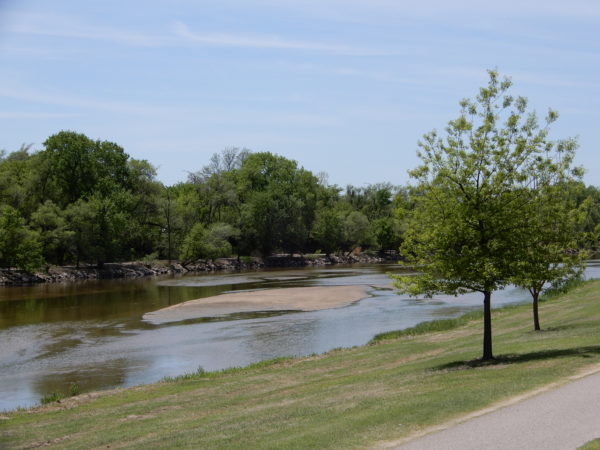
The Arkansas River at Old Cowtown Museum
In 1864, J. R. Mead established a trading post on the banks of the Arkansas River (think Ar-Kansas). Trappers who lived in cabins like this one brought their furs to the post.
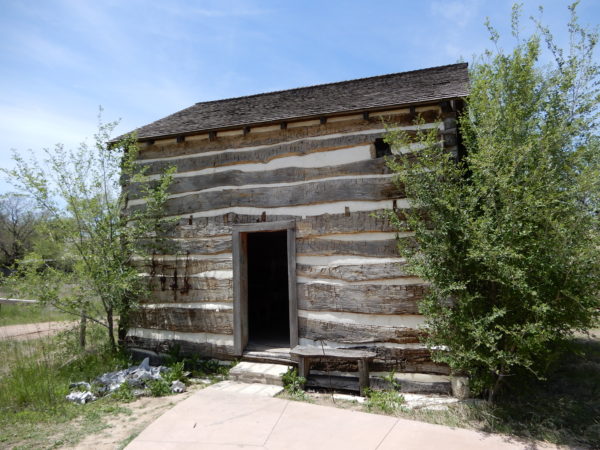
Trapper cabin, built about 1865
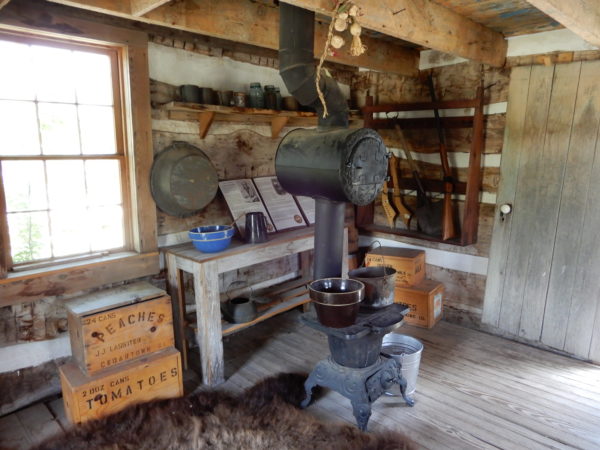
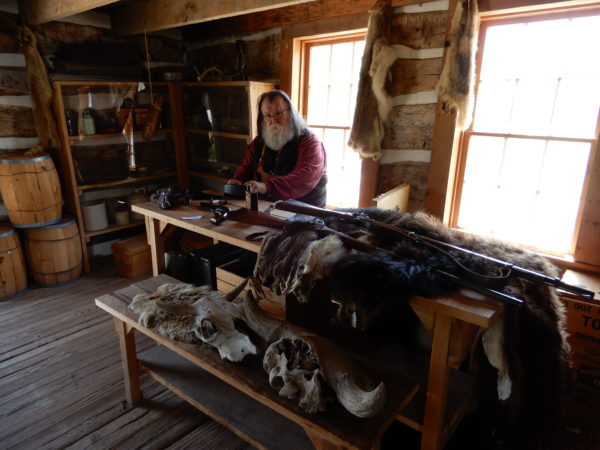
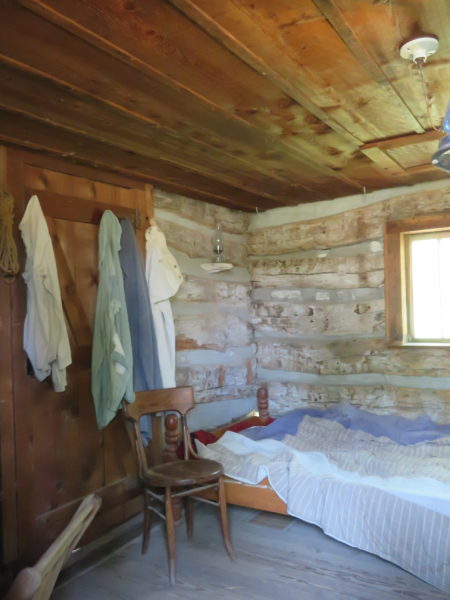
The oldest house in Wichita was built by Darius Munger in 1869. He bought land from the Osage Indians and resold it to settlers in smaller parcels. His home functioned as a post office, boarding house (there were four hotel rooms upstairs), meeting place and office for the justice of the peace.
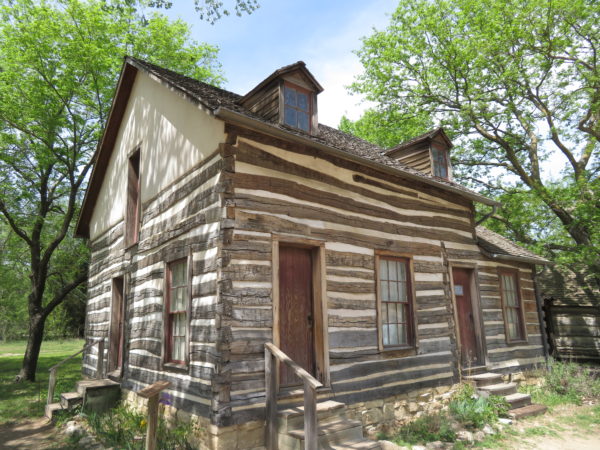
Munger house
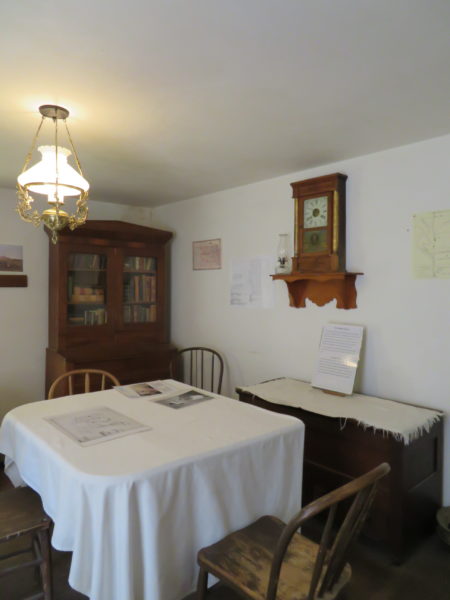
Office in the Munger house
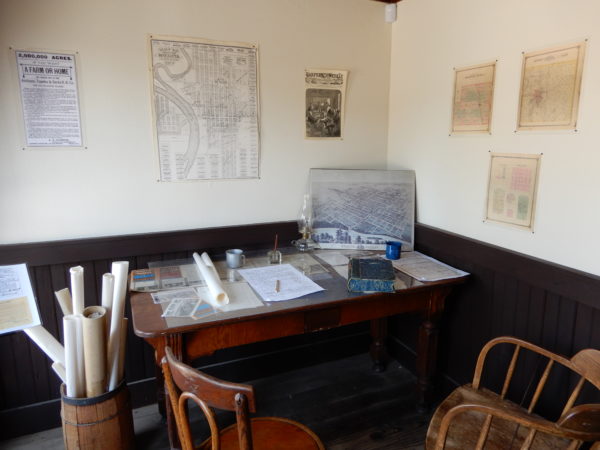
A few years after Munger sold land from his house, land agents worked from more formal offices like the one pictured here.
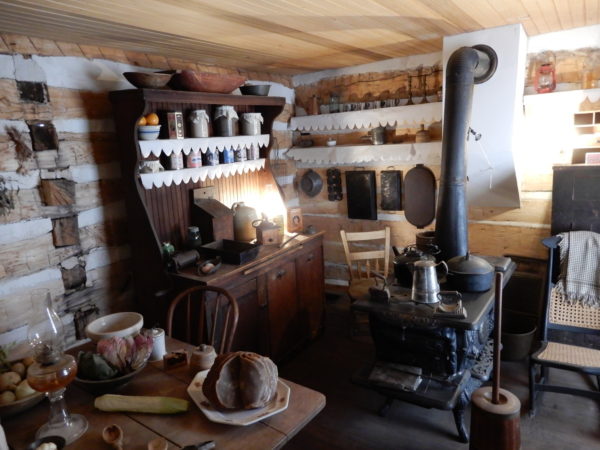
Kitchen in the Munger house
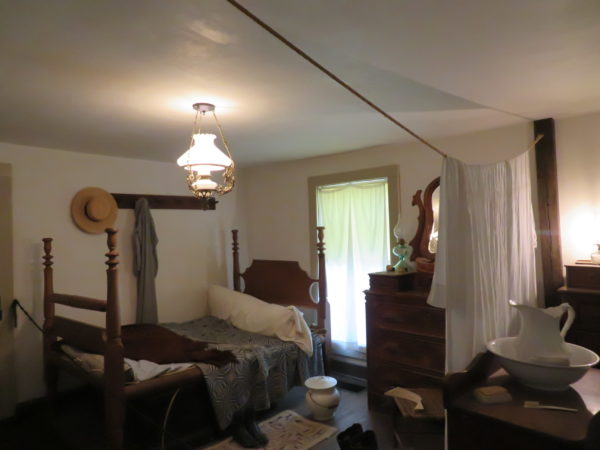
Sleeping area for the two Munger daughters
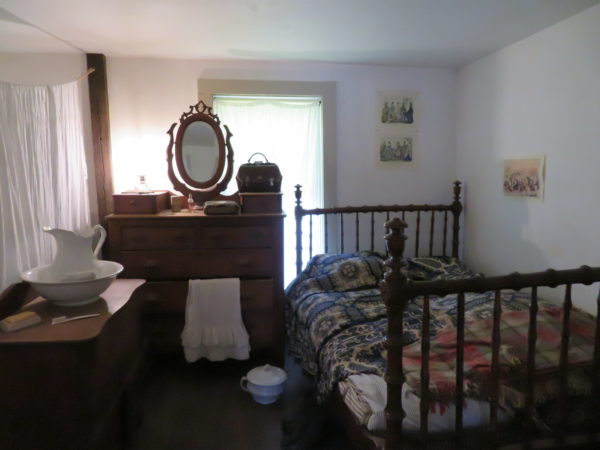
Sleeping area for the adult Mungers on the other side of the room they shared with their daughters
In 1870, when Wichita had a population of 689, 13 residents organized a congregation and the First Presbyterian Church was built. Within two years they had outgrown the building and sold it to the Catholic church. The building was later sold again and converted to a rooming house. Victor Murdock, publisher of the Wichita Eagle, recognized the value of the building but was unable get the owners to agree to sell it. After a fire in 1949, the building was condemned and a friend and coworker of Murdock purchased it for $400. The building became the core of what would become Old Cowtown.
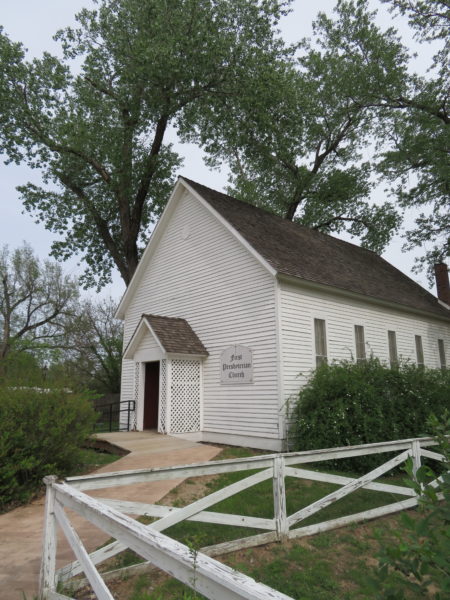
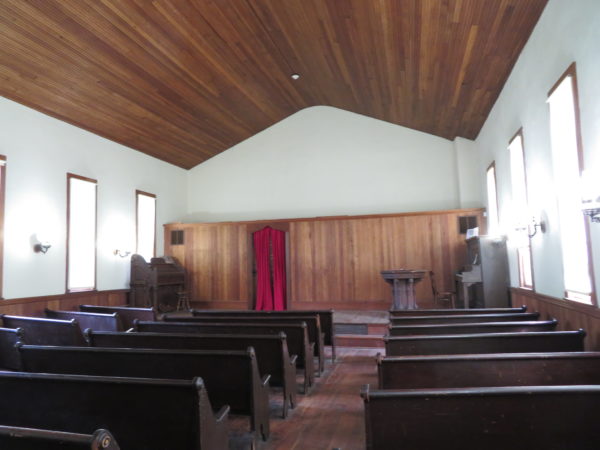
The first physician came to Wichita in 1869.
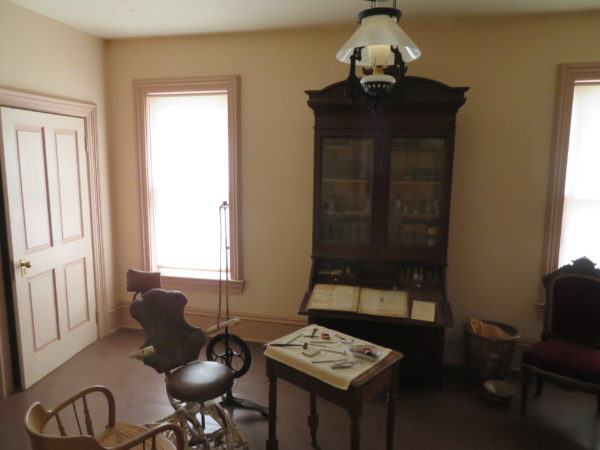
Physician’s office
A drugstore opened a year later.
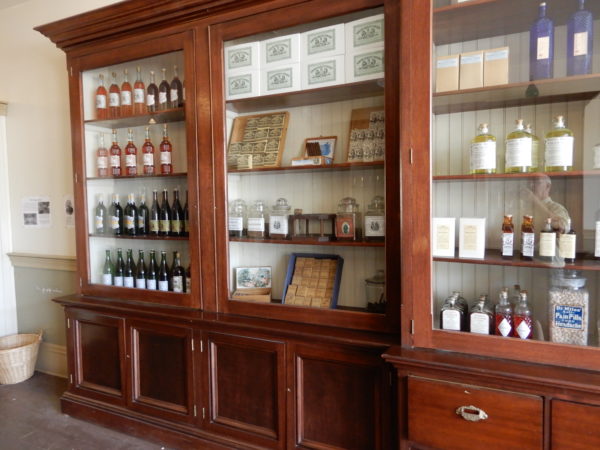
A dentist followed, although at the time dentistry consisted mostly of extracting teeth.
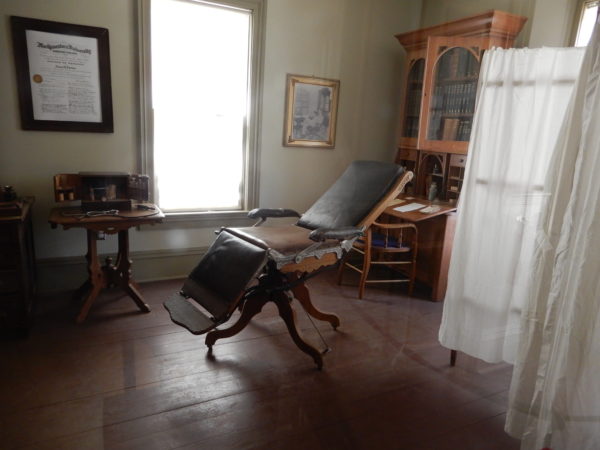
Doctor’s office
The medical building at the museum also includes a fascinating pharmacy.
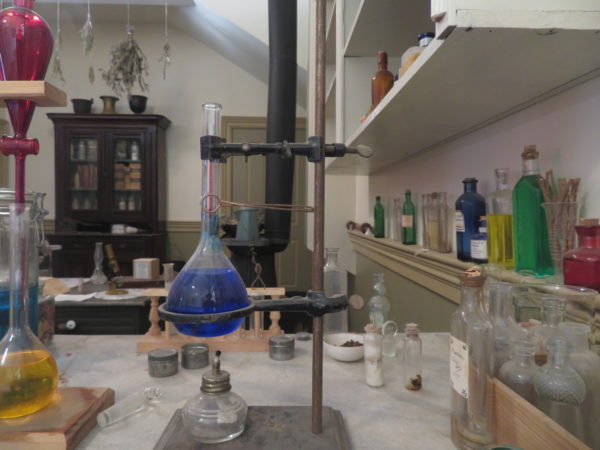
The first school and jail were both built in 1871. Until then, classes had been held in an abandoned sod dugout for $1 per pupil. J. R. Mead who established the trading post in 1864 donated the land for the new school. The building at the museum was built in 1910 in Wichita and was moved to various locations as space was needed.
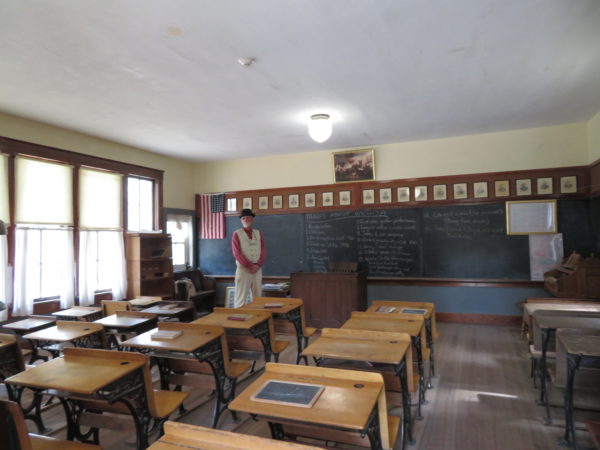
The jail contract was for $600. The finished product was mostly used to contain people displaying drunkenness or rowdiness.
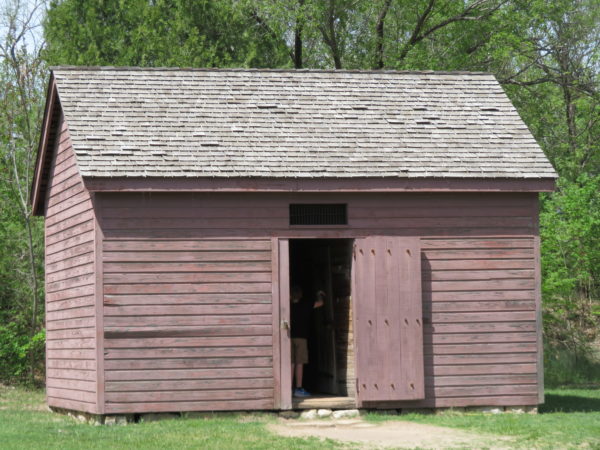
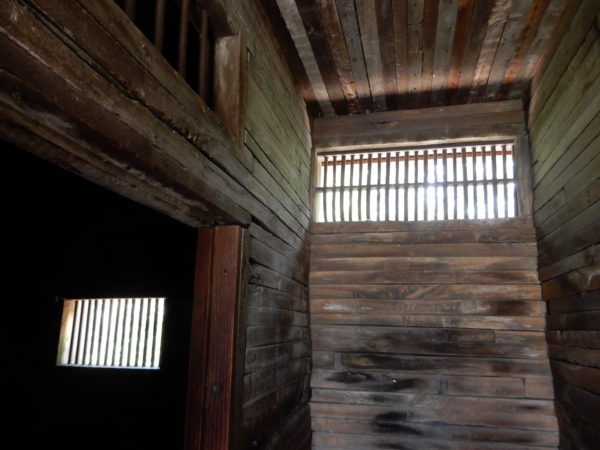
Gillman Blood moved to Wichita and built a house in 1871. He grew apples, blackberries, and raspberries and was known for selling “honest” baskets–the fruit on the bottom was better than that on the top. His house is typical of a “hall and parlor” residence. The hall was the center of household activity and the parlor was for private activities or sleeping.
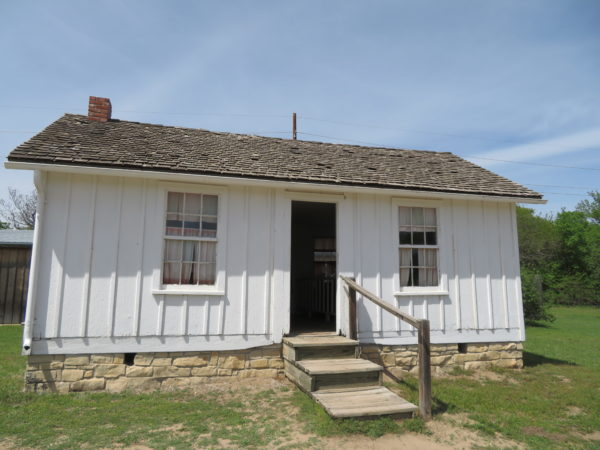
Blood house
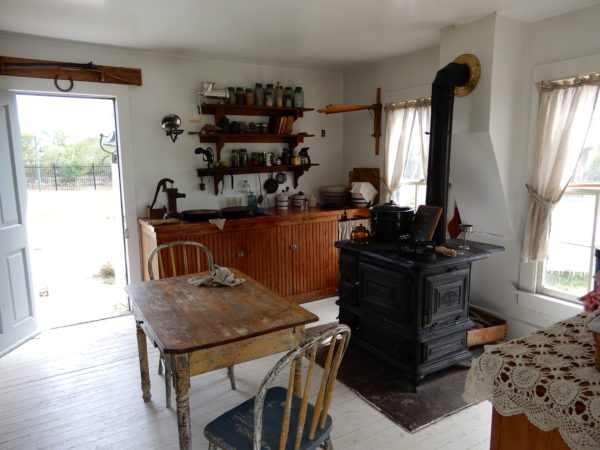
Hall of the Blood house
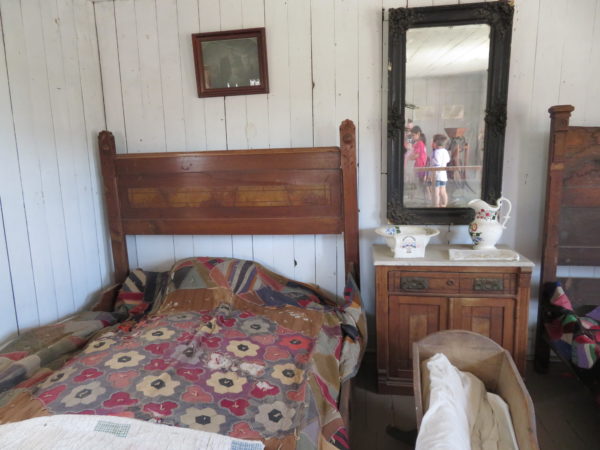
Parlor of the Blood house
Marshall Murdock moved to Wichita in 1872 to start a promotional newspaper, a public relations tool to promote business, settlement and the recruitment of railroads as well as to support the social and cultural aspects of the community.
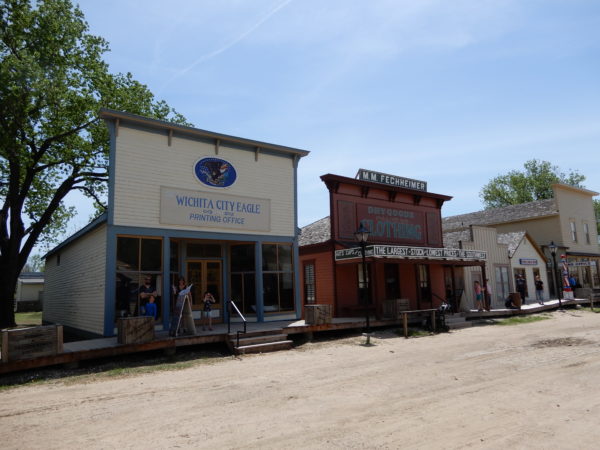
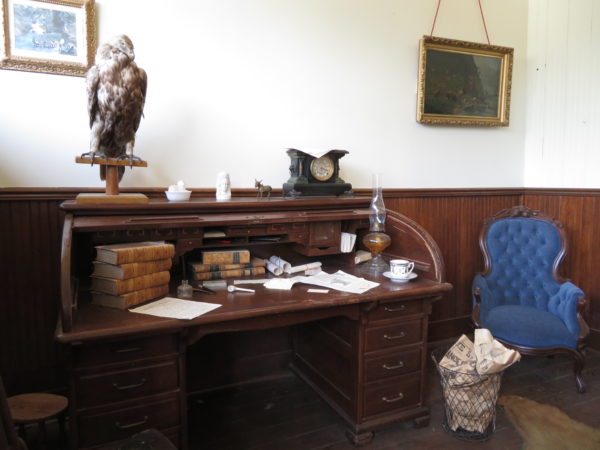
Murdock’s desk
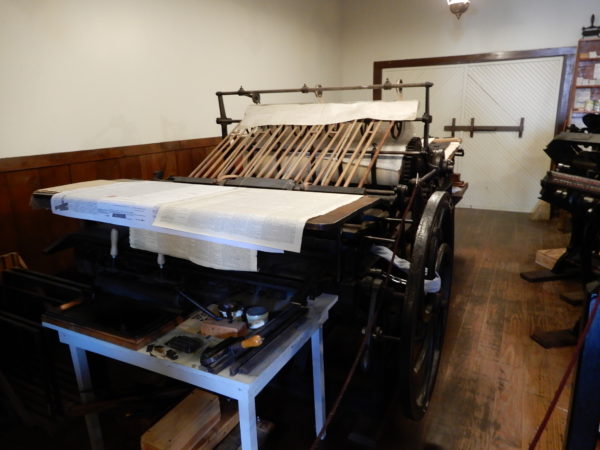
This press was purchased in 1873.
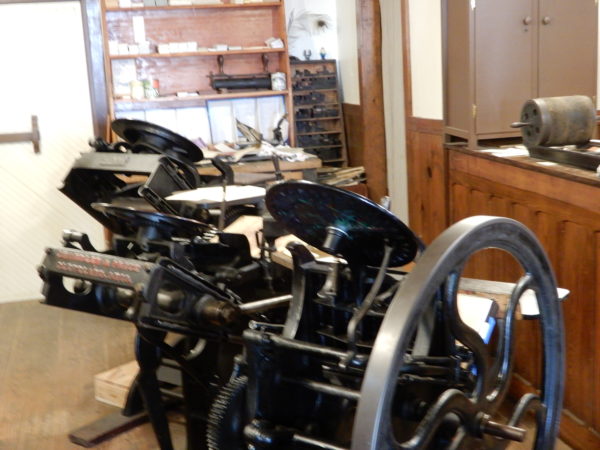
This was the job press, used for cards, letterhead, and handbills.
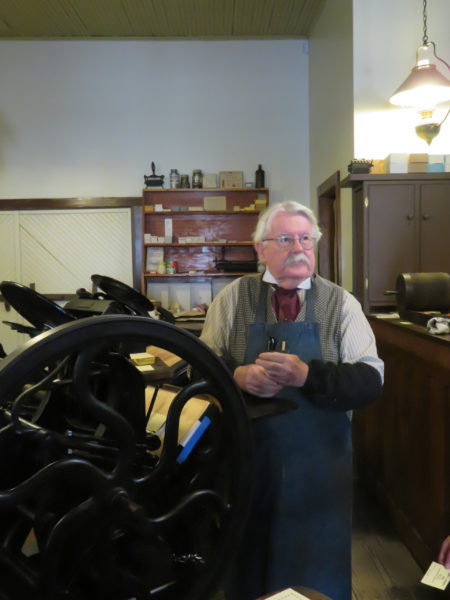
This man demonstrated the job press by letting young people print a page.
Max Fechheimer opened a dry goods store in Wichita in 1873. The structure that houses the replica of his store was originally a house built in 1895.
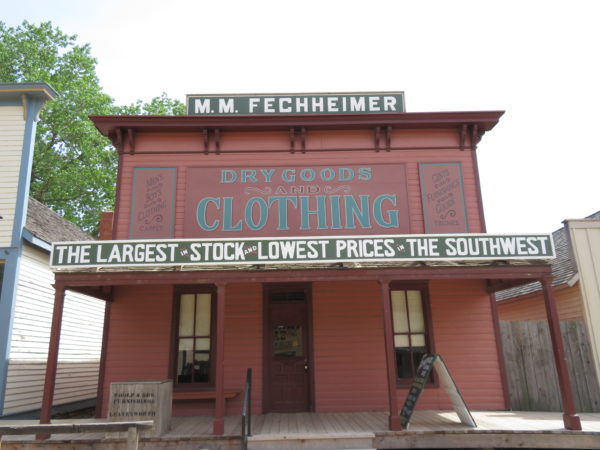
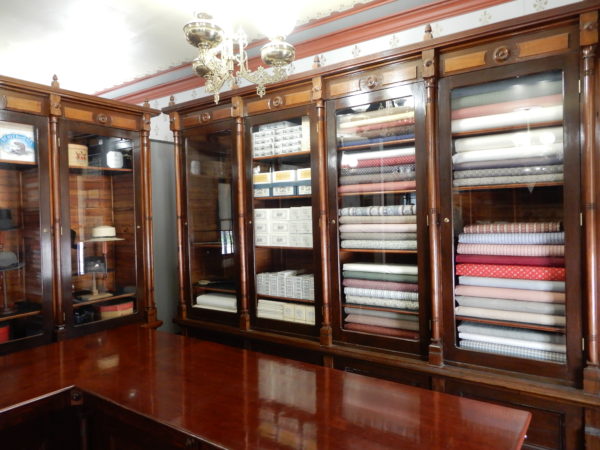
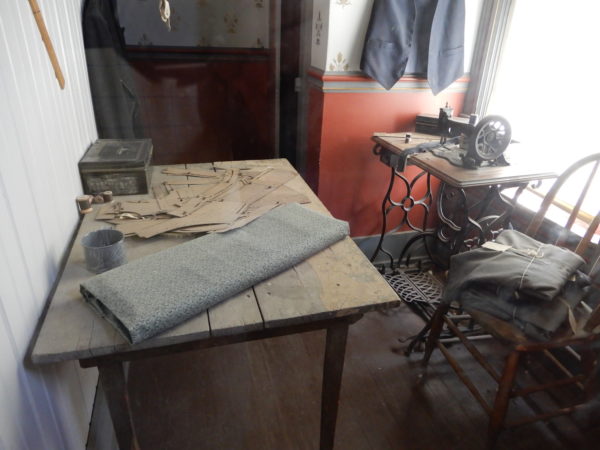
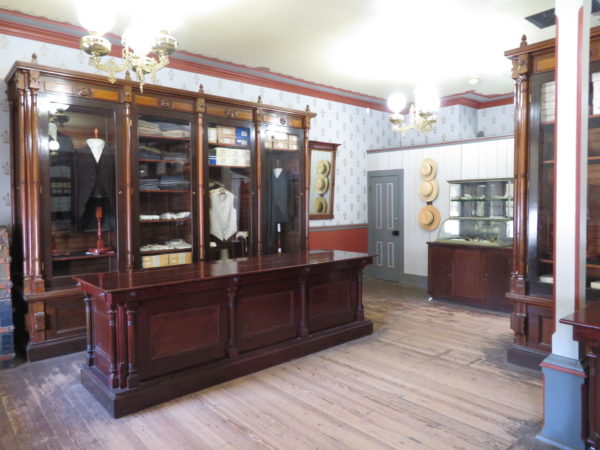
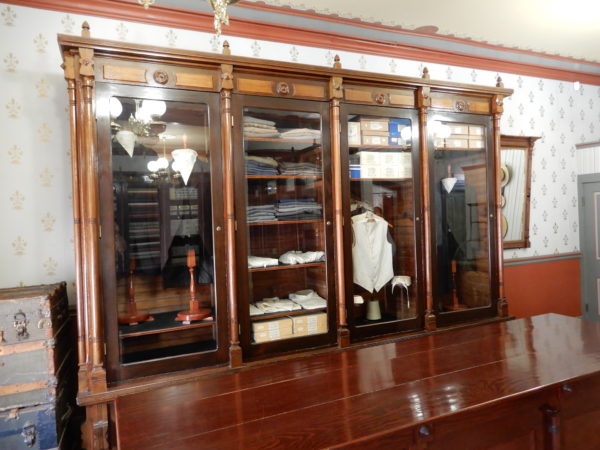
A building built in 1875 and used as a rooming house until 1960 hosts the museum’s Southern Hotel which was built in 1871. Room and board was $1 a day; rooms alone were 50¢. Dining at hotels of this era was an experience in elegance. The Southern Hotel burned in 1875.
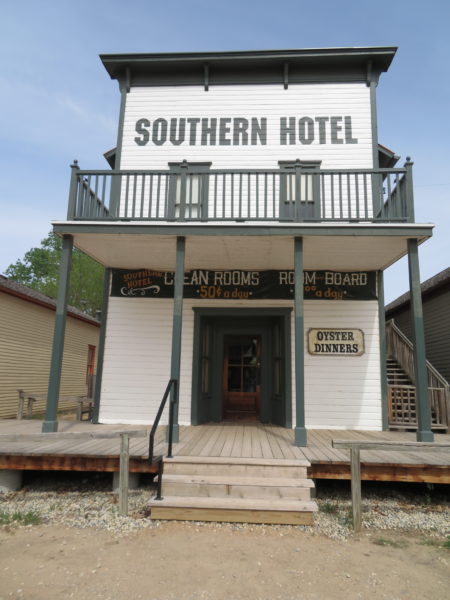
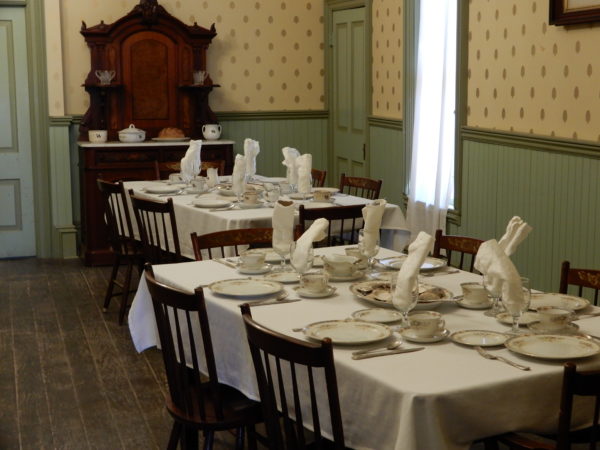
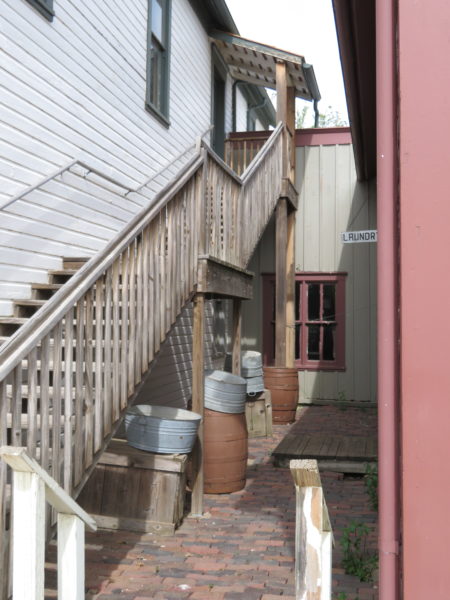
The museum has staged a Chinese laundry in the alley beside the hotel,
A Gothic Revival house was built in 1874 for Marshall Murdock, the founding publisher of the Wichita Eagle newspaper. His son Victor later spearheaded an effort to save Wichita’s earliest buildings.
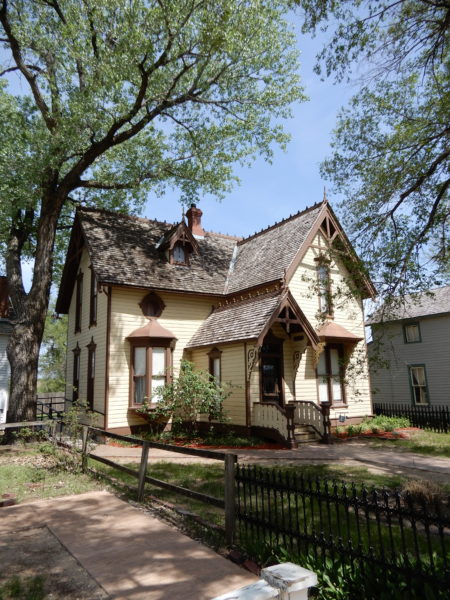
Murdock house
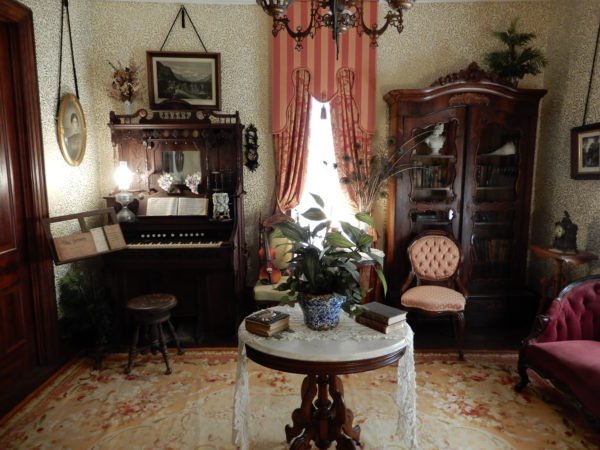
Front parlor of the Murdock house
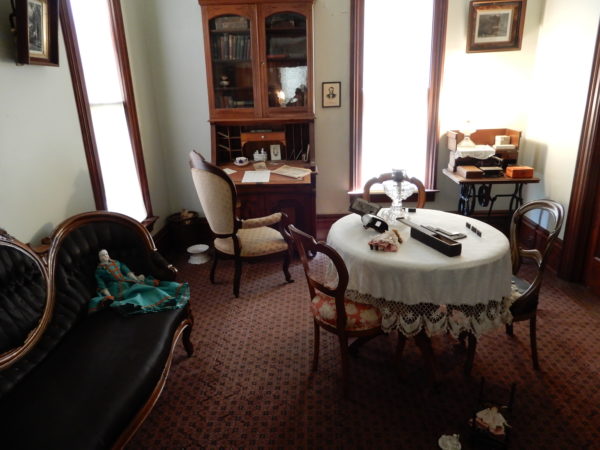
Family parlor of the Murdock house
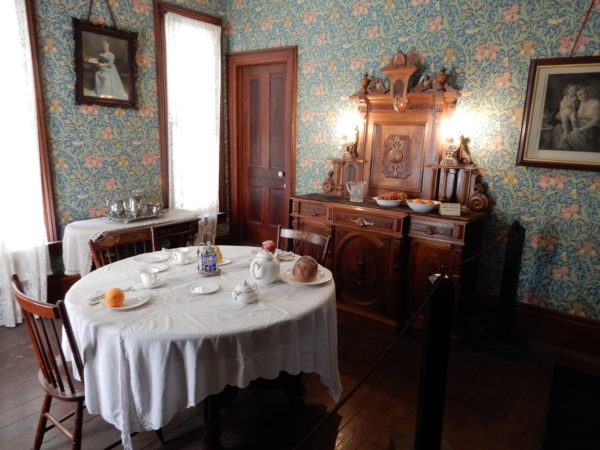
Dining room of the Murdock house
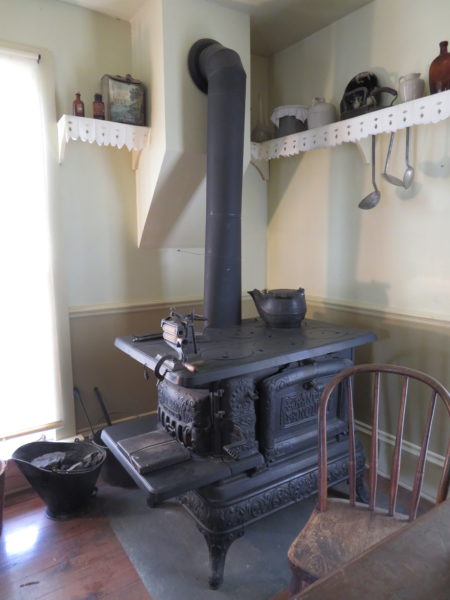
Kitchen stove in the Murdock house
In 1880, the population of Wichita was 5482. That same year Wesley Hodge, an African-American blacksmith, built a house for his family. Hodge died in 1885 and his family bought the former Presbyterian church, moved it next to their home, and operated it as a rooming house for over fifty years.
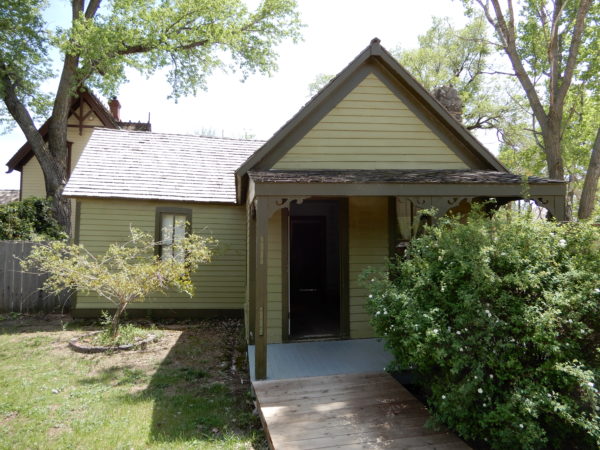
Front of the Hodge house
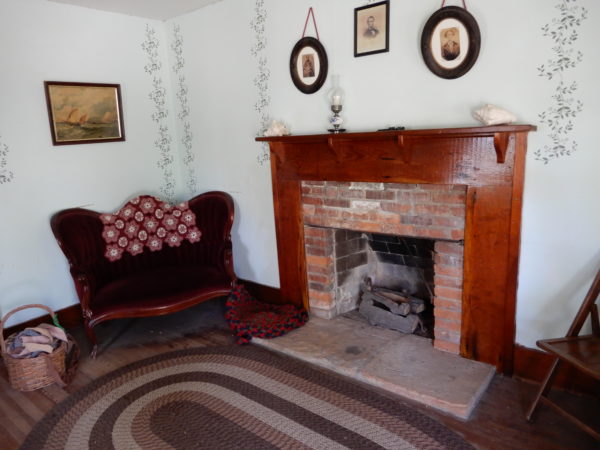
Living room of the Hodge house
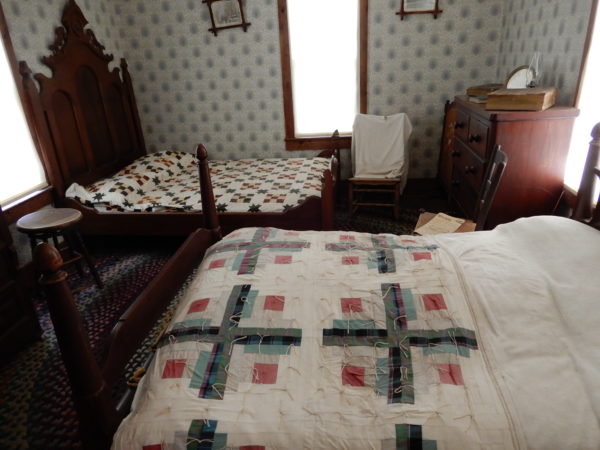
Bedroom in the Hodge house
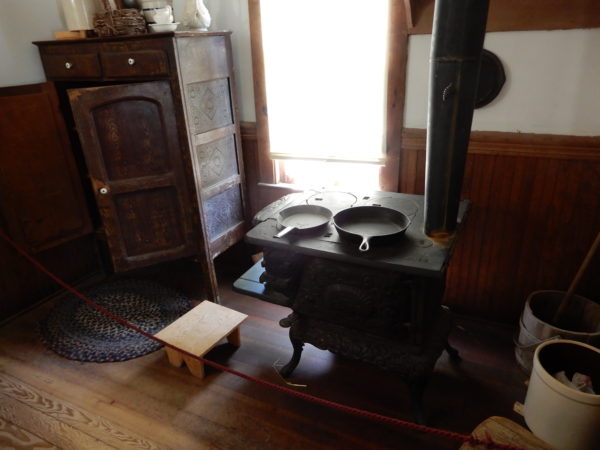
Kitchen in the Hodge house
O’Hara’s Barbershop was built in 1881 as the Wichita Town Hall.
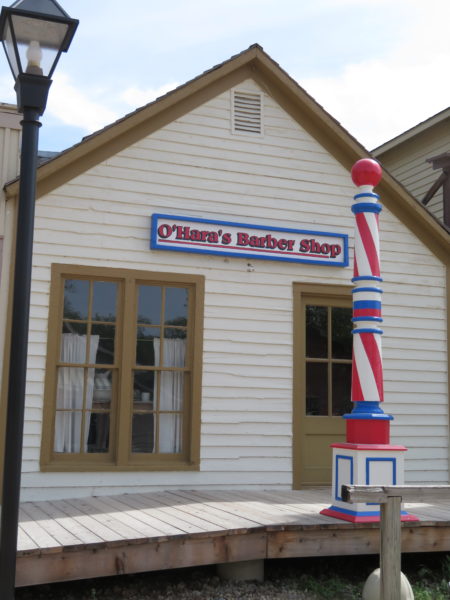
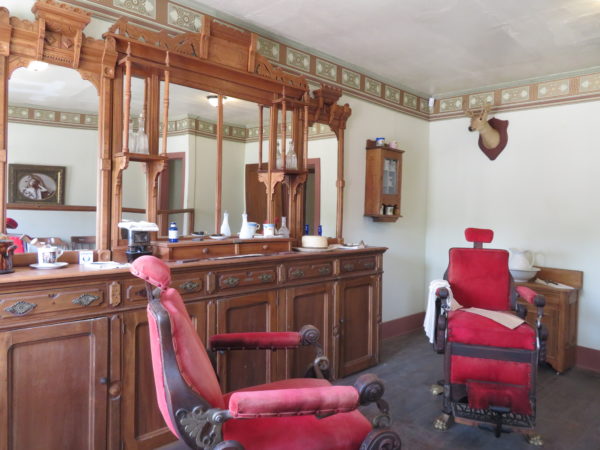
By the mid-1880’s, ranchers and farmers were struggling over whether or not open lands should be fenced. The museum stages a gunfight depicting this situation.
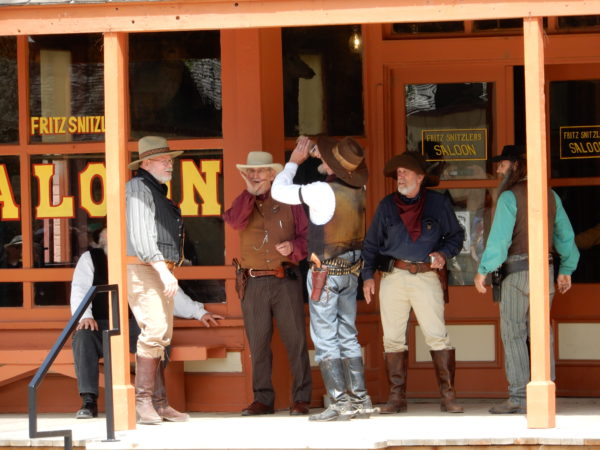
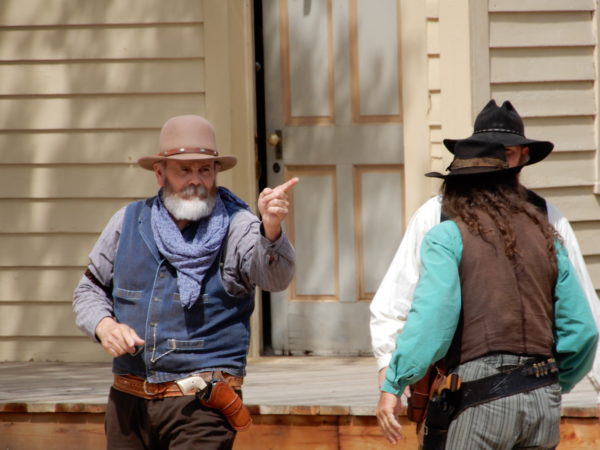
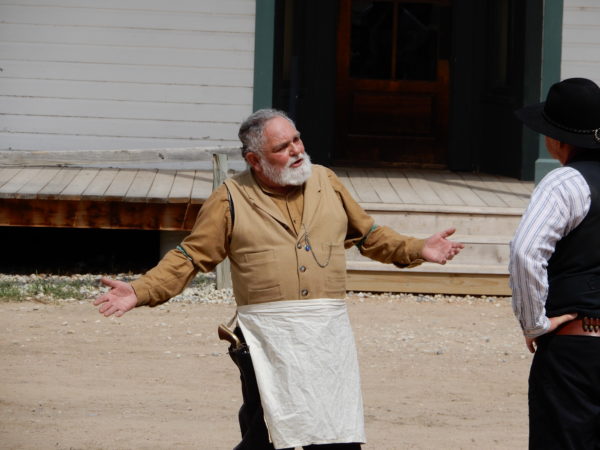

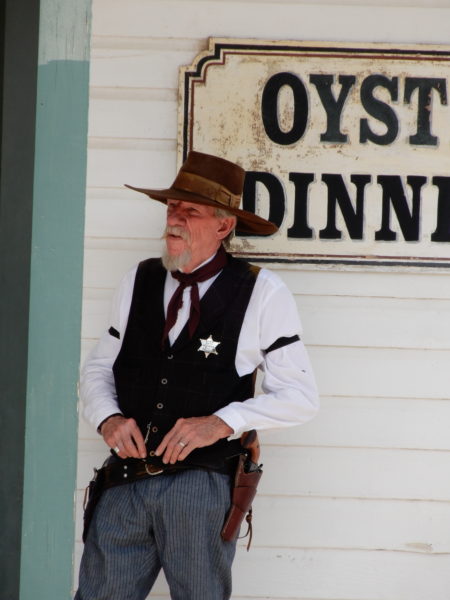
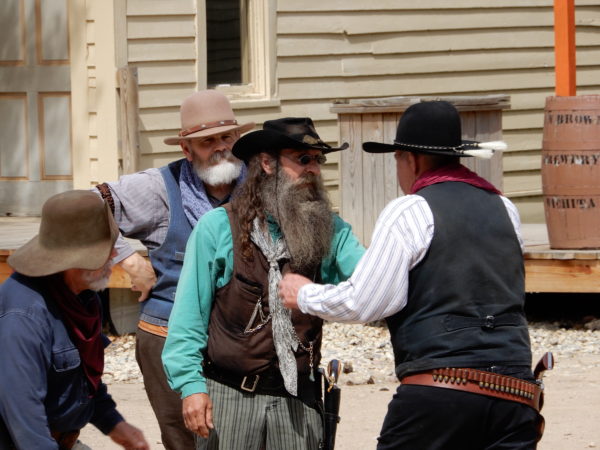
The museum displays a farmhouse, barn, animals, tools, and equipment from the 1880’s.
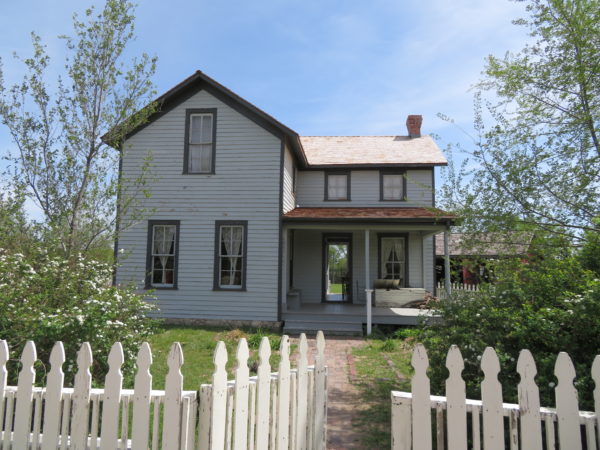
Farmhouse exterior
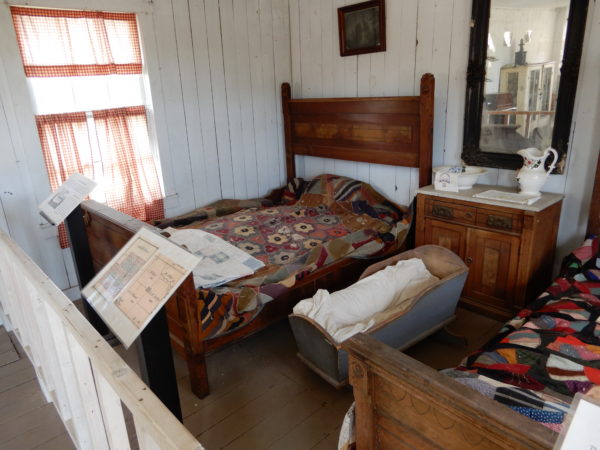
Farmhouse bedroom
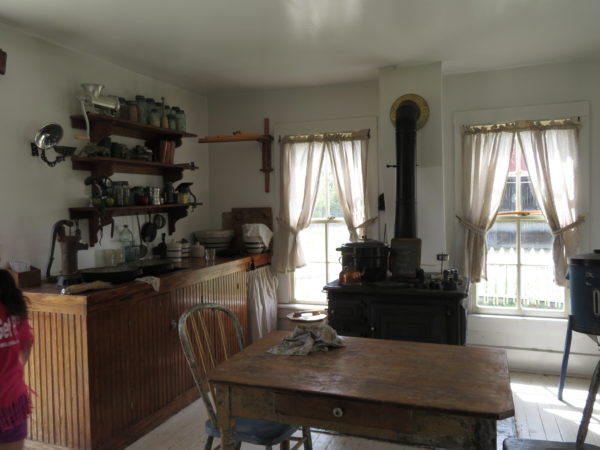
Farmhouse kitchen
The museum’s general store was built in Garden Plain, Kansas in 1884.
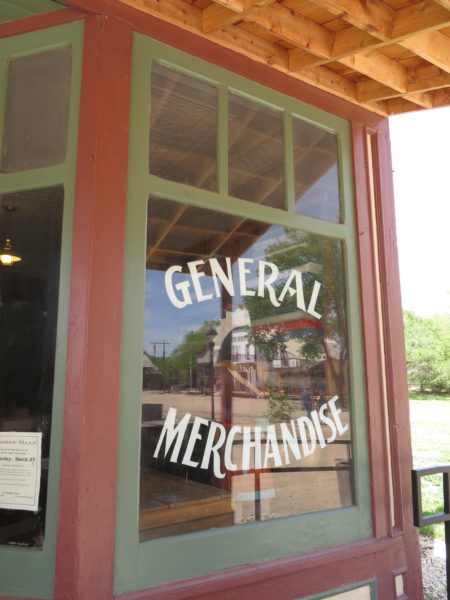
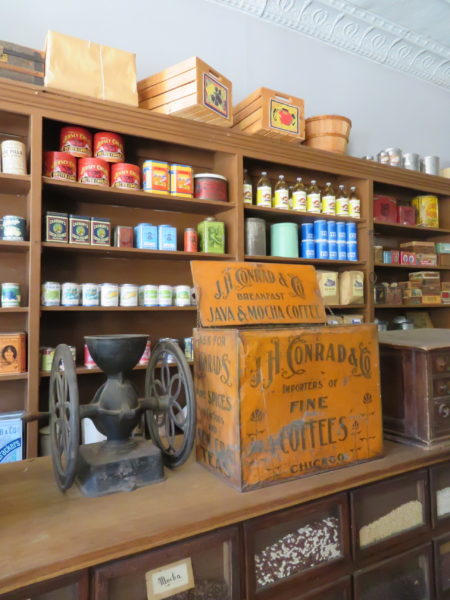
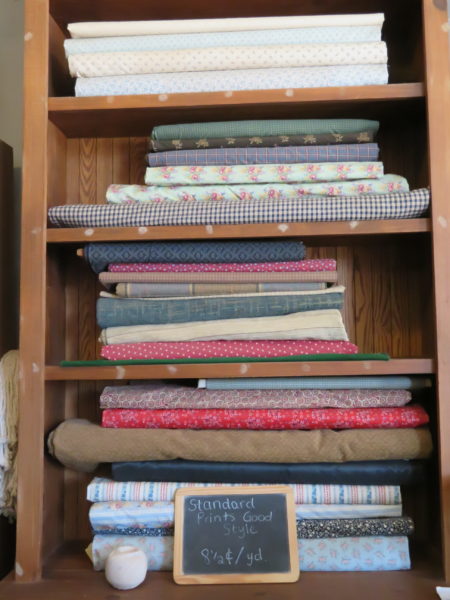
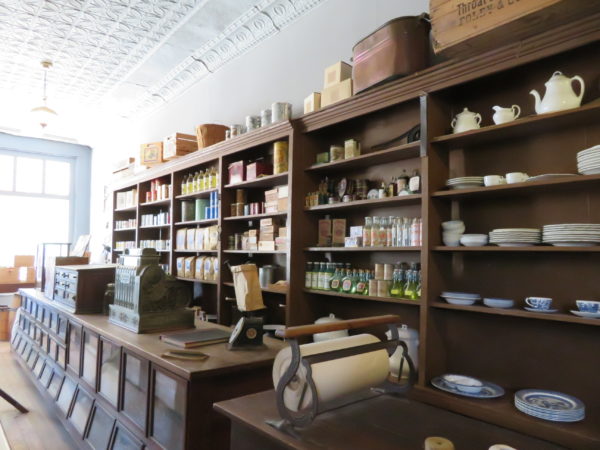
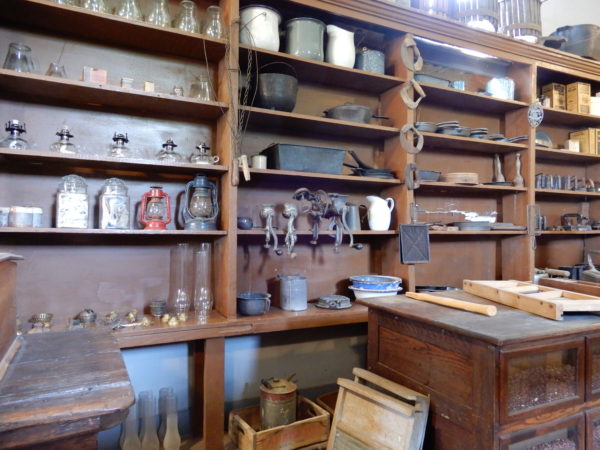
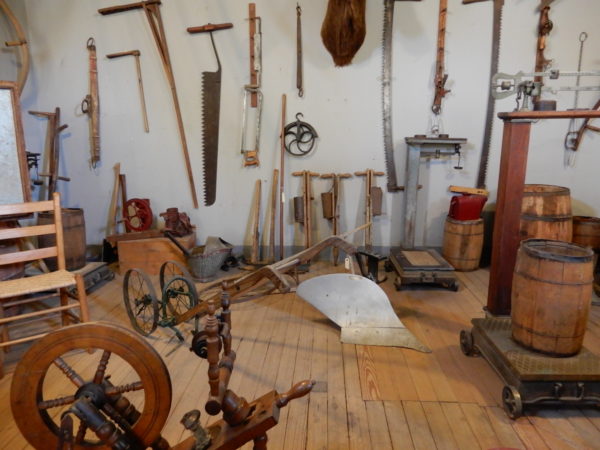
Henry Wolf was a German immigrant in Kingman County, Kansas. His house, built in 1883, is typical of those in which a new immigrant would live. Wolf was a farmer and cobbler.
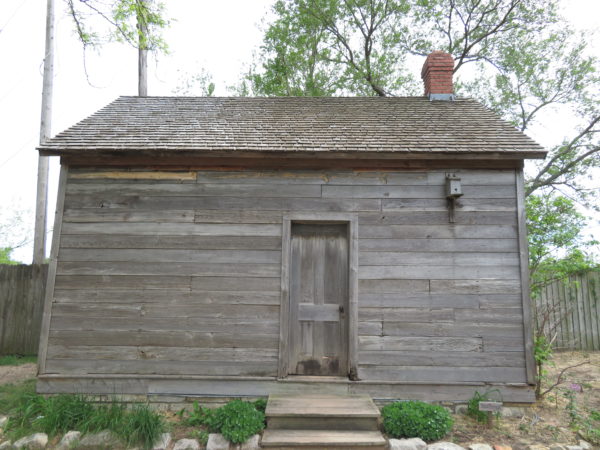
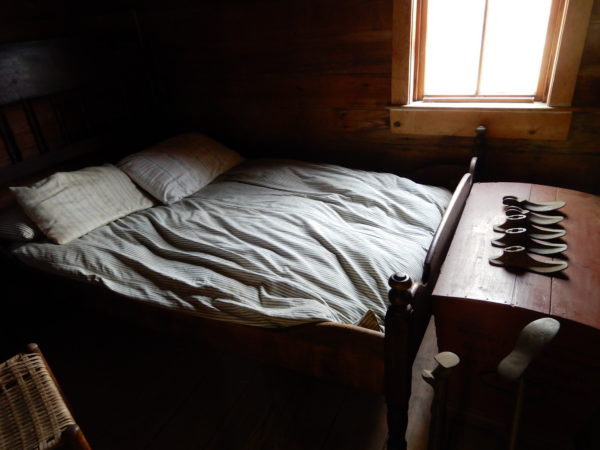
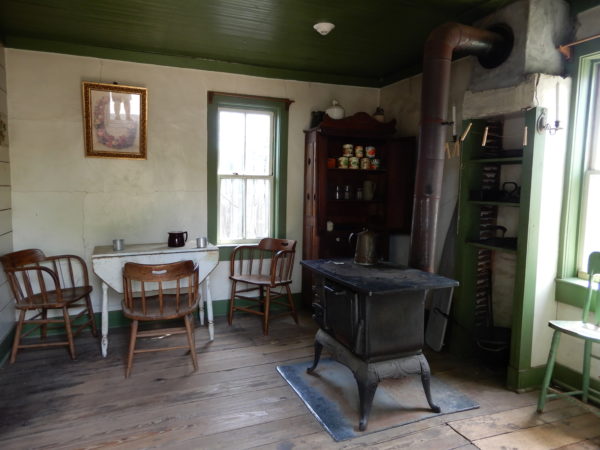
The building used by the museum as Fritz Snitzler’s Saloon was built as the Rockford Township Hall in 1885.
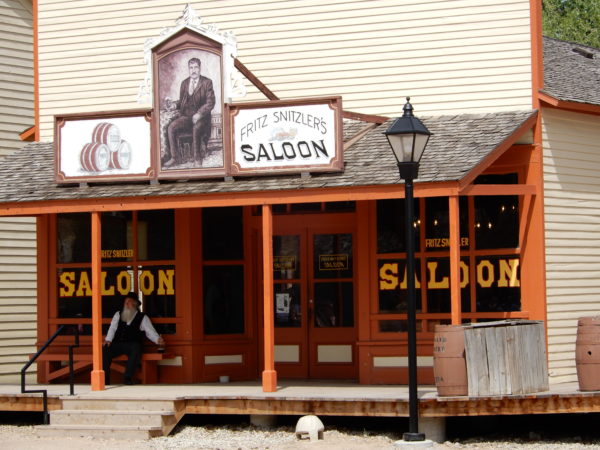
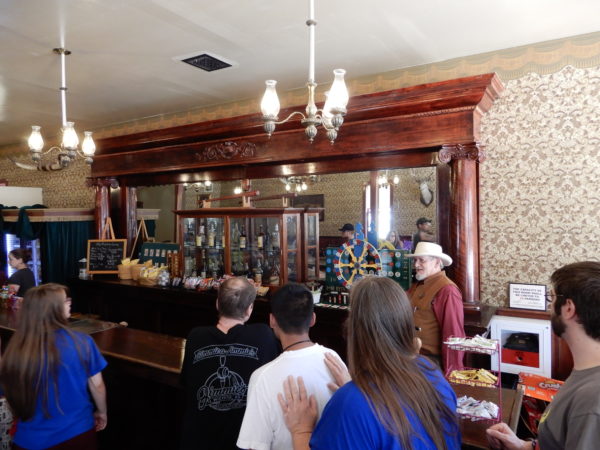
Single persons often rented houses or rooms. The bedroom in this house represents a room a school teacher might have rented in 1885.
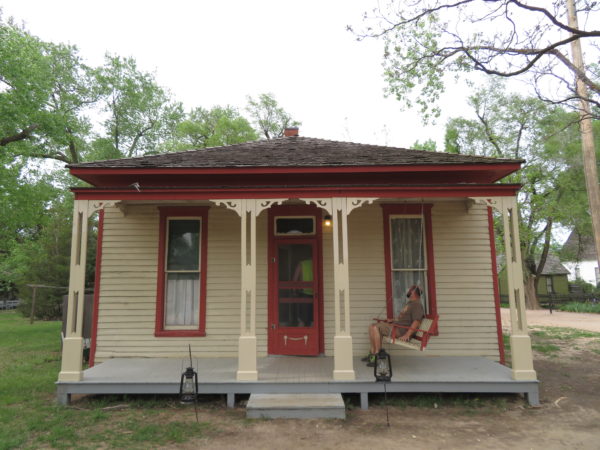
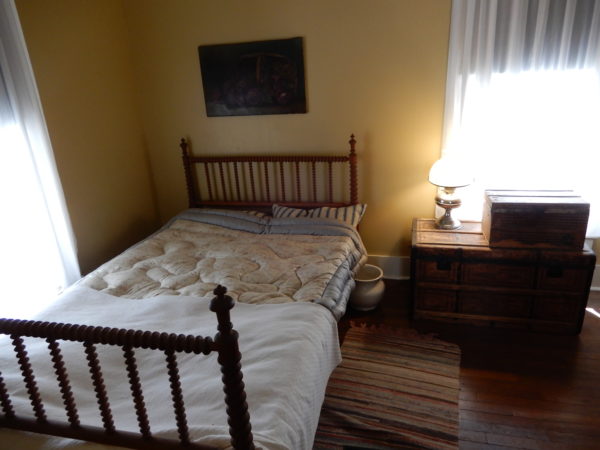
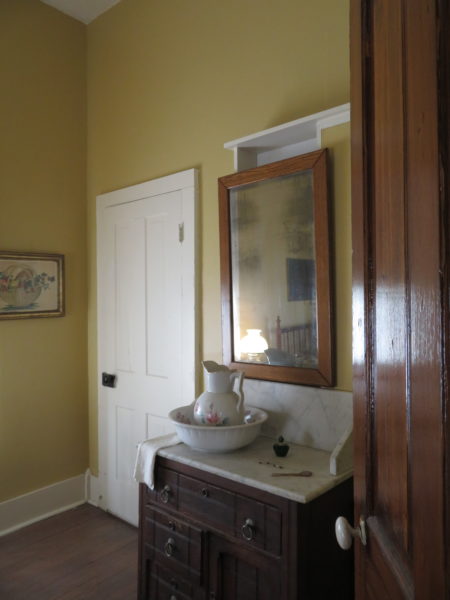
The Wichita and Southwestern Railroad was an independent company that convinced the Atchison, Topeka and Santa Fe Railroad to build a branch line to Wichita. The depot at the museum was built in 1887 in Aness, Kansas.
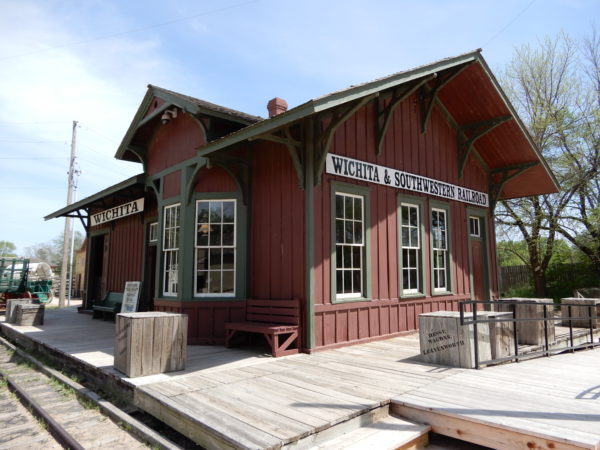
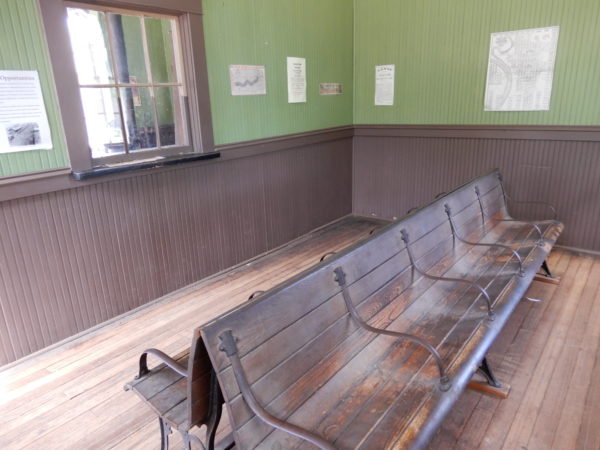
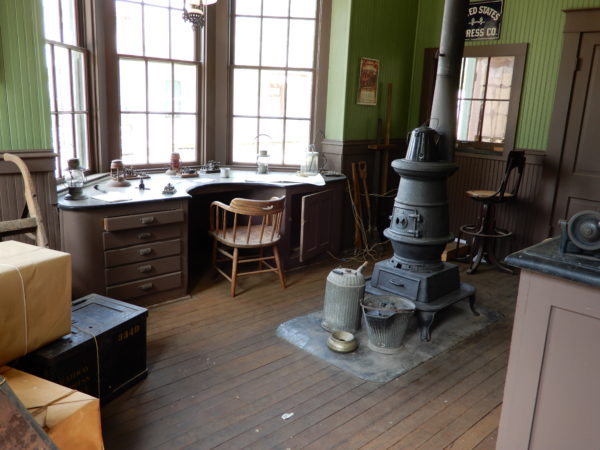
Lower-middle class laborers often lived in houses like the “Story and a Half House” that had only half a story upstairs. This one was built in the late 1880’s.
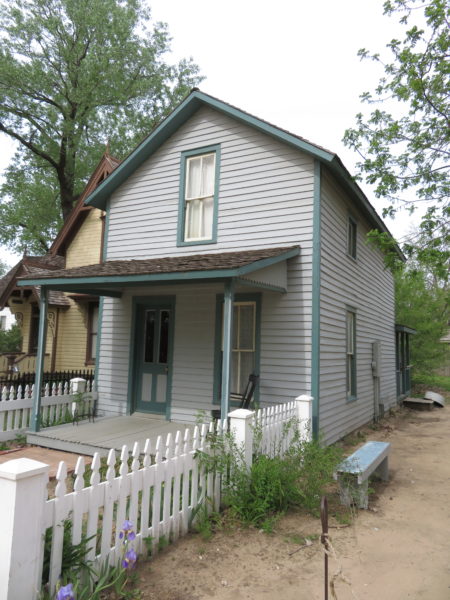
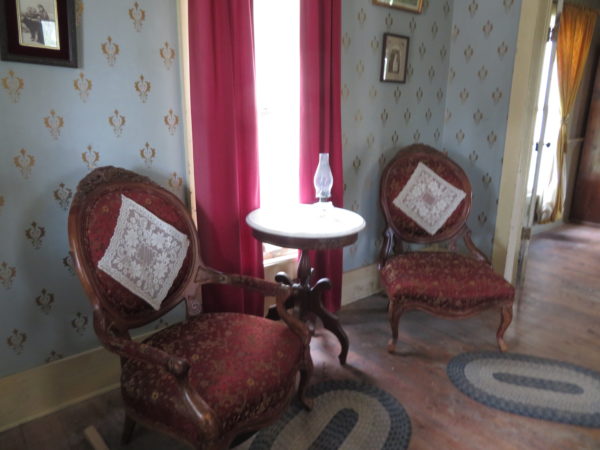
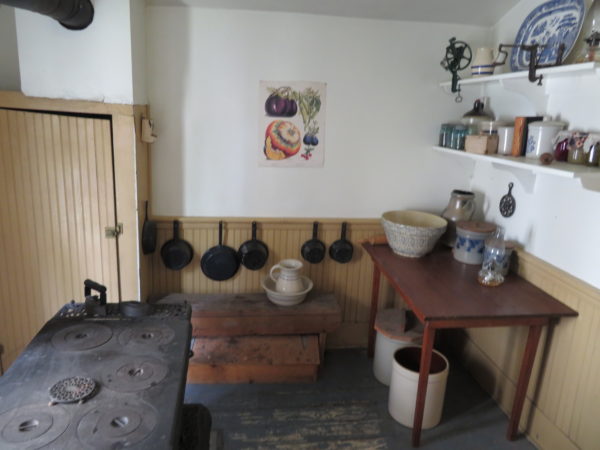
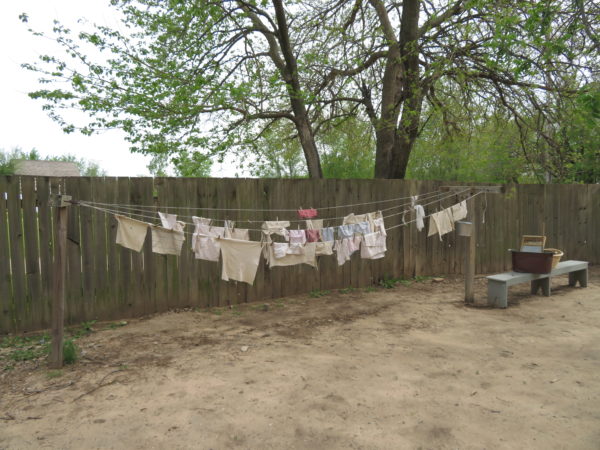
Fred Breising built a meat market in Whitewater, Kansas in 1890.
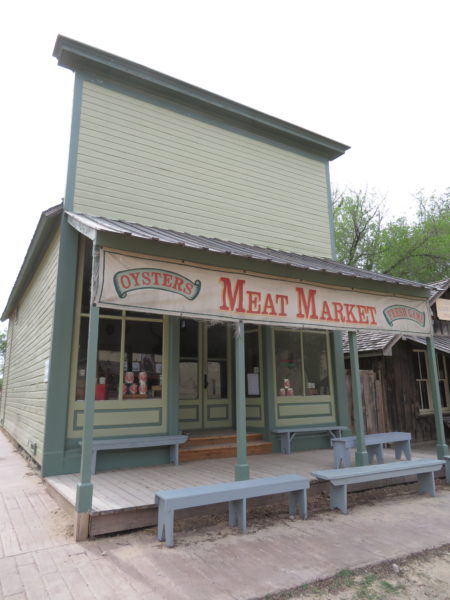
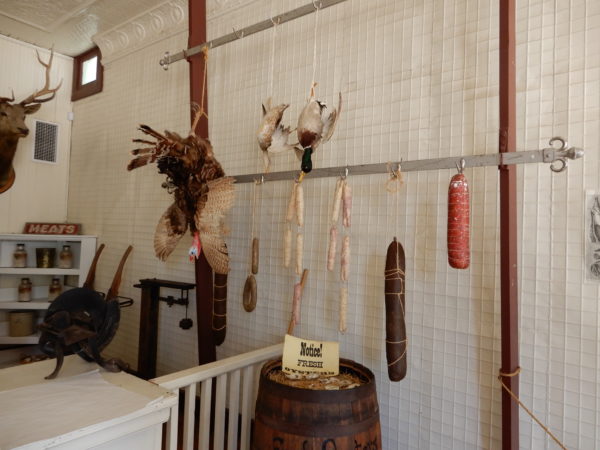
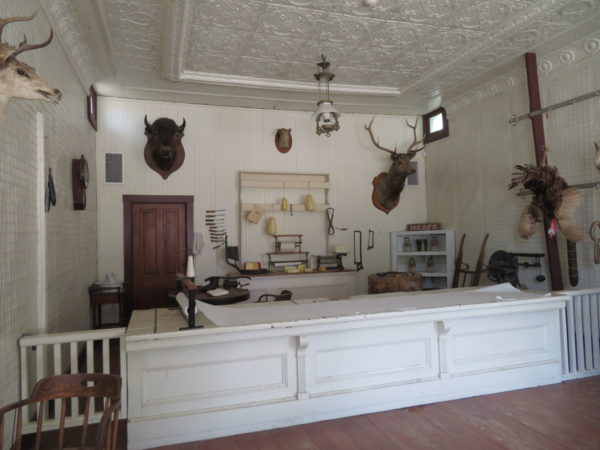
The museum is now home to what is believed to be the only fully restored, operational grain elevator of its kind in North America. It was built in 1910 in Bentley, Kansas.
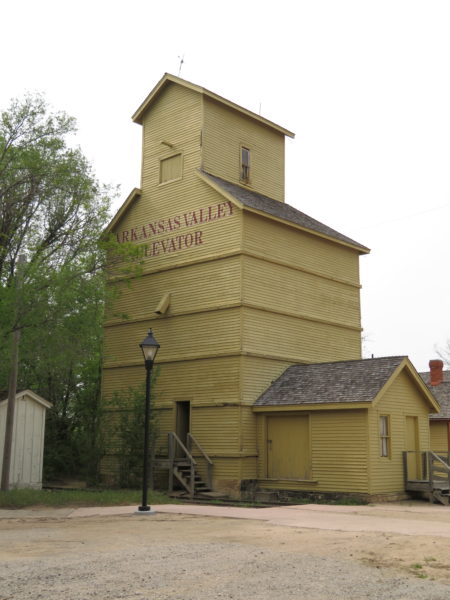
The harness and saddlery shop was built as a house in 1910.
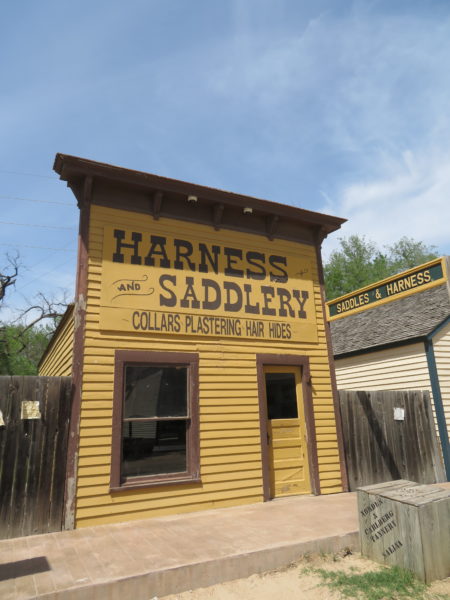
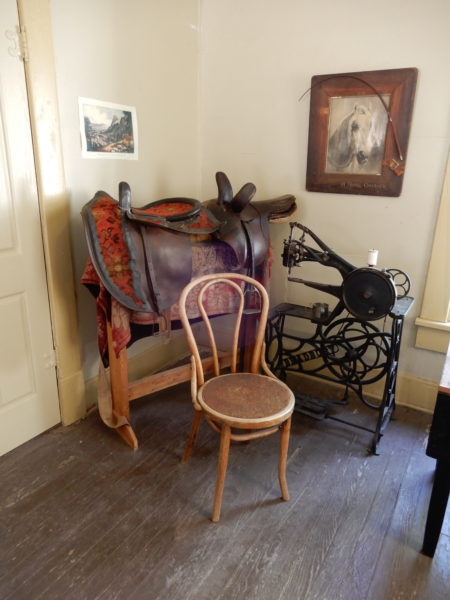
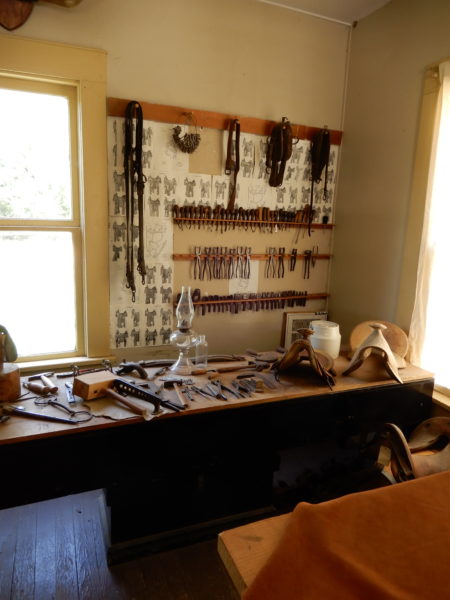
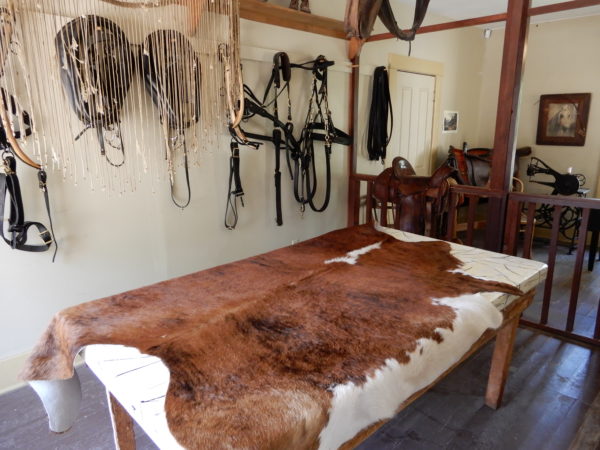
A blacksmith shop has been constructed on Museum property.
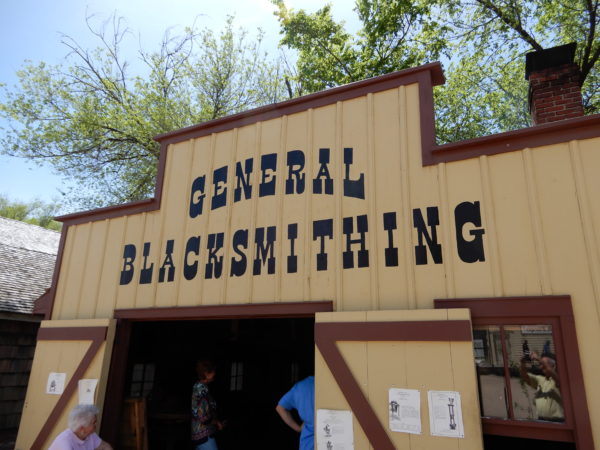
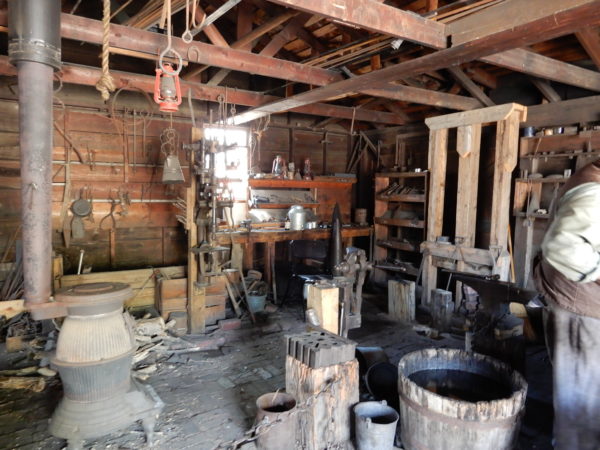
By 1872, Wichita had three banks including the First Arkansas Valley Bank. Interest rates ranged from 26-60%. Bank furnishings are displayed in one building at the museum.
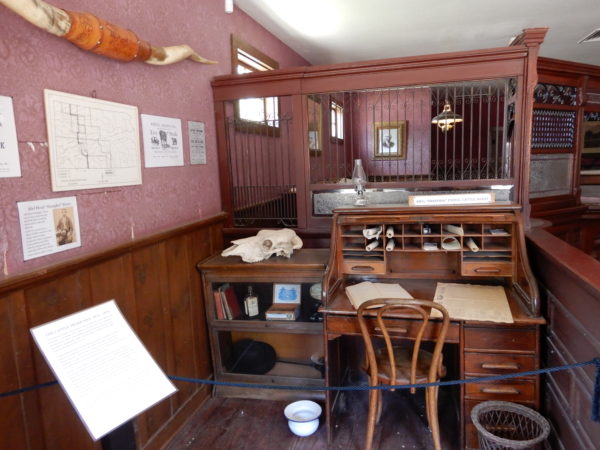
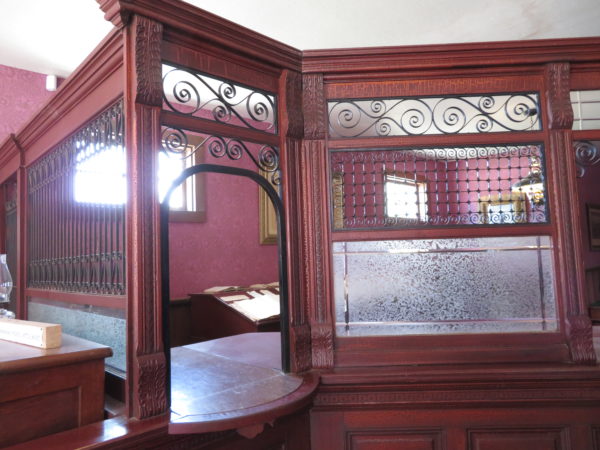
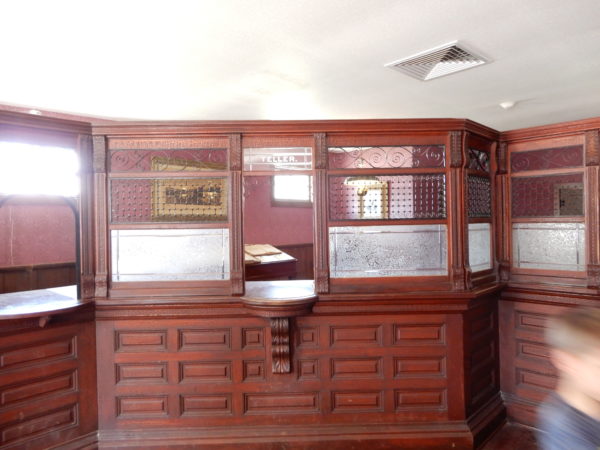
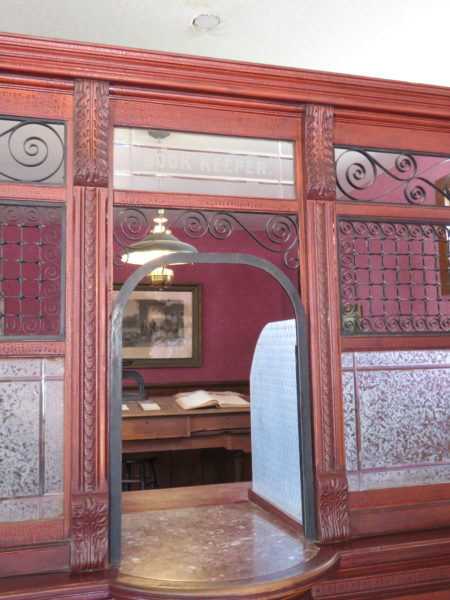
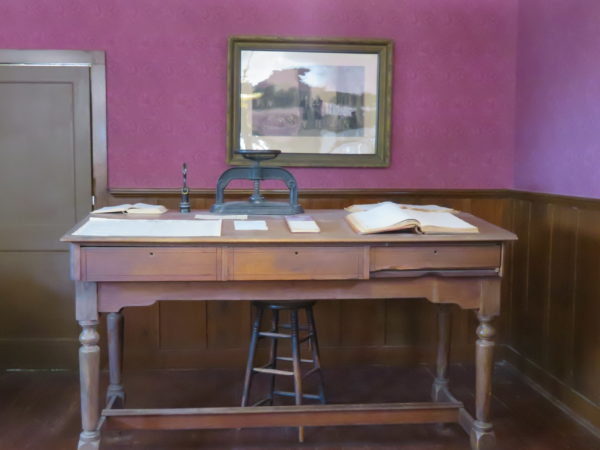
We think Bob Cratchit might have stood at a desk like this one . . .
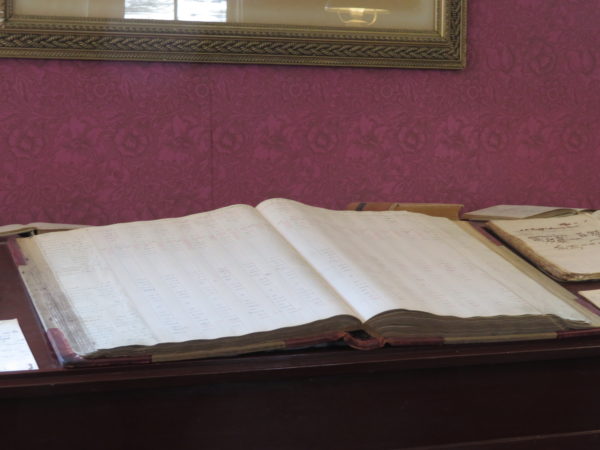
. . . and kept a ledger like this.
Women in Wichita would have relied on a dressmaker to keep them fashionable.
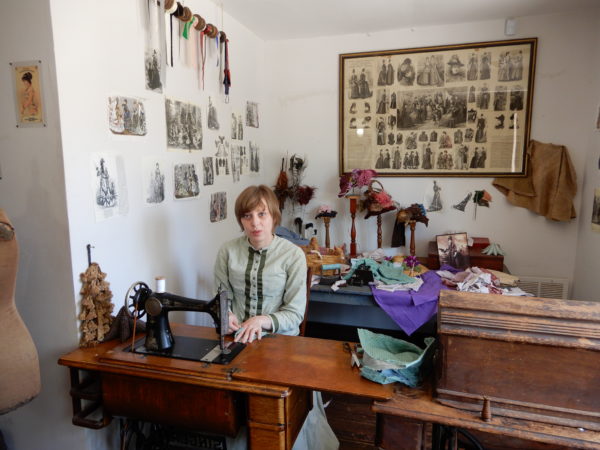
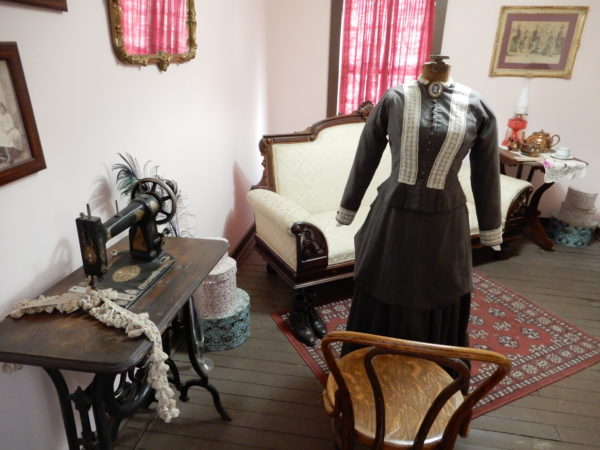
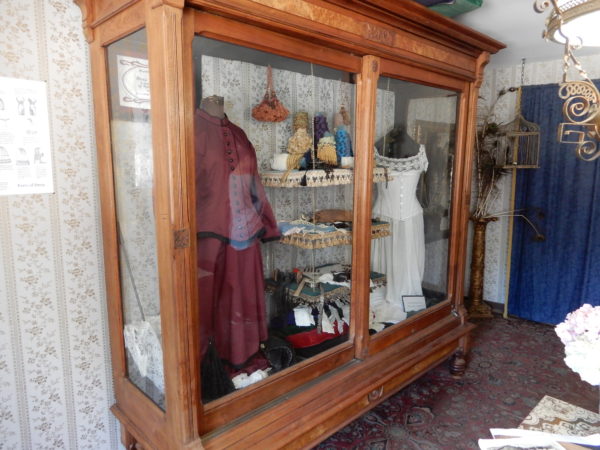
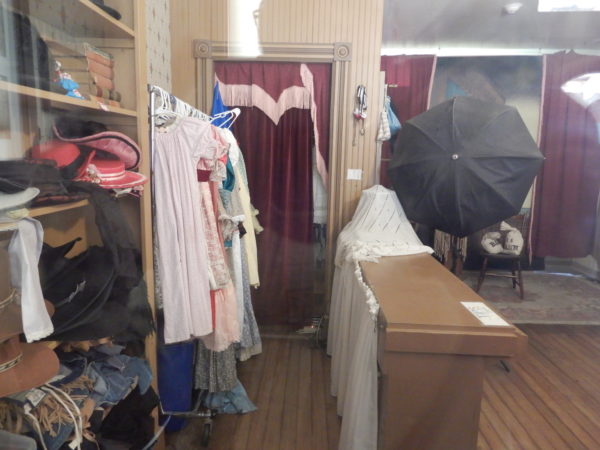
Furniture similar to what would have been available to residents of Wichita is housed in a furniture store.
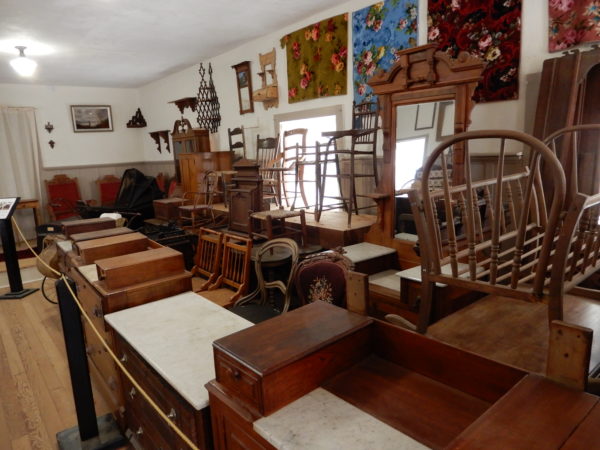
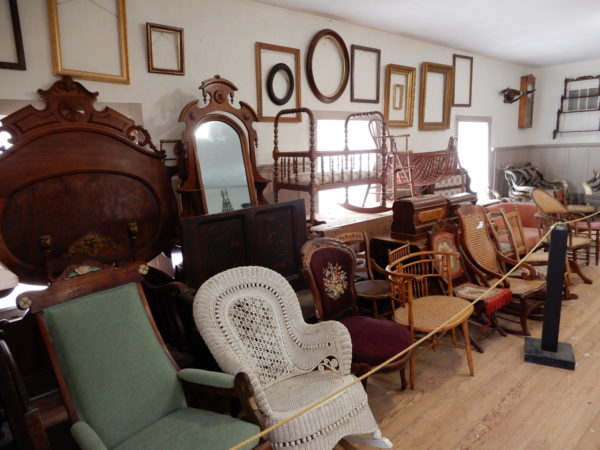
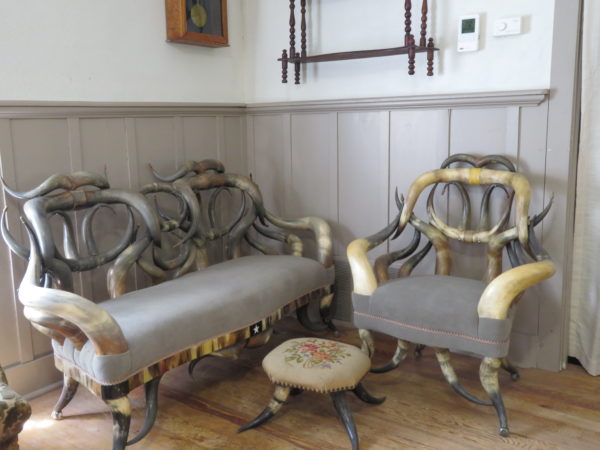
This horn furniture was made by Wenzel Friedrich.
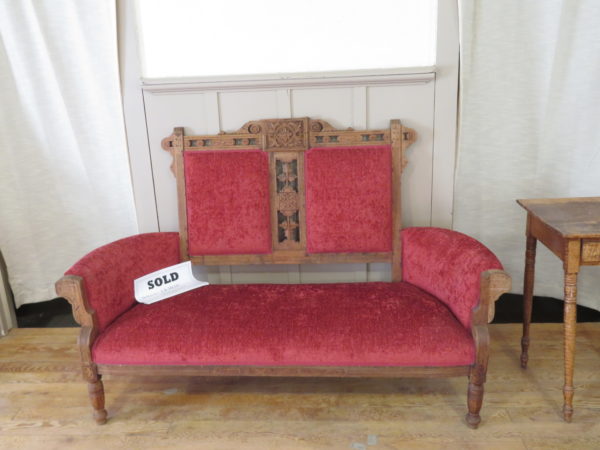
James R. Mead, one of the founders of Wichita, owned this sofa, now restored.
Undertaking was originally an extension of the furniture business. Undertakers began to play a more prominent role in the 1870’s, and funeral homes and parlors became common by the 1880’s. Families who experienced the loss of a loved one would draw the curtains and cover mirrors to prevent the spirit of the deceased from being trapped in the reflective glass. Clocks were stopped at the time of death and a vigil was kept twenty-four hours a day until the burial on the fourth day after the death.
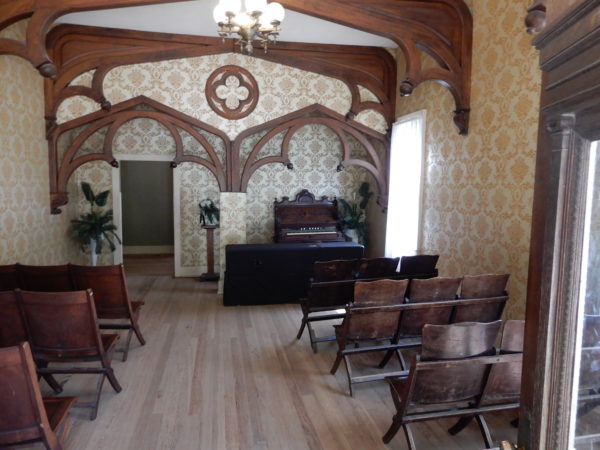
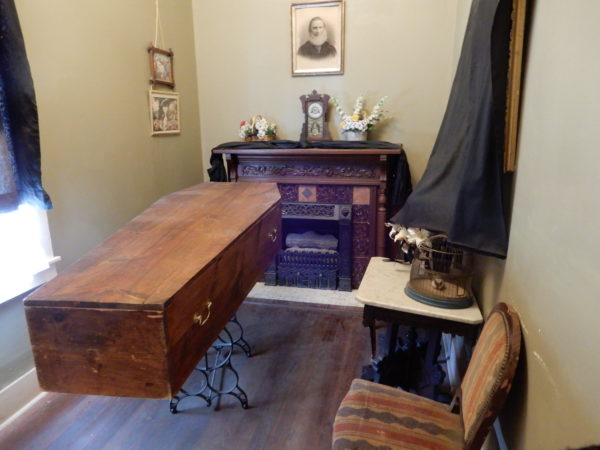
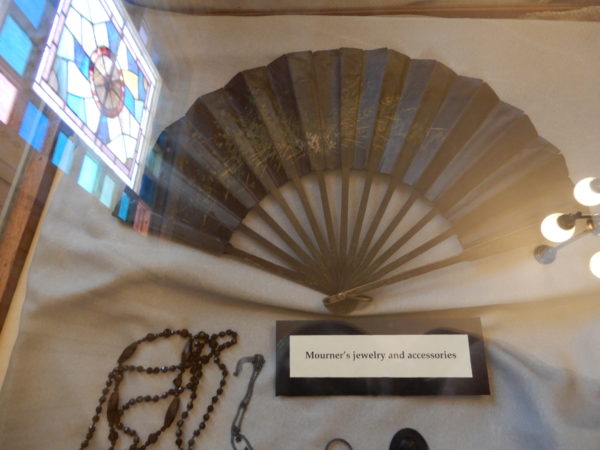
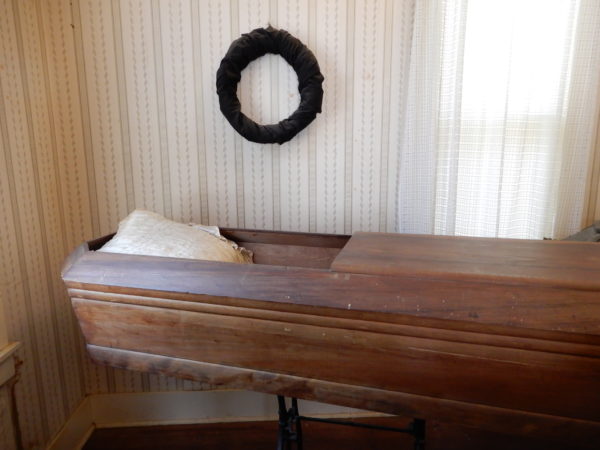
The museum doesn’t portray more recent businesses, but it does let visitors know that Wichita has been home to more than a few.
- White Castle Hamburgers originated in Wichita in 1921
- Wichita was the broomcorn capital of the United States in the 1920’s
- By 1929, one-quarter of the commercial aircraft produced in the United States was produced in Wichita factories
- By 1957, half of all business and executive jets made in the U.S. were made in Wichita
- Pizza Hut was founded in Wichita in 1958
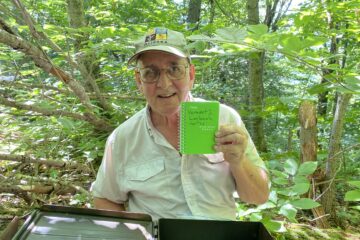

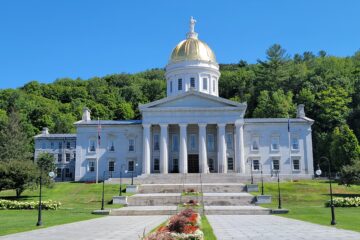
5 Comments
Joette · May 30, 2018 at 6:23 pm
Fascinating!
Susan · June 1, 2018 at 10:37 am
Great photos and what a history!!! Looks like it was a great stop
Madhuri Land · June 1, 2018 at 9:17 pm
What a wonderful collection of pictures. You could sell them back to the place to make a brochure!!
I really got a sense of being there with you from the blog. Thank you!! Really enjoyed it.
Gabrielle · November 24, 2023 at 5:42 pm
Thank you so much to this wonderful visit via your photos and text!
Do you have any more of the interior of the train depot? I LOVE old depots but it is hard to find authentic interiors
Again, I very much appreciate all you did to share your photos and adventure to Cowtown!!!
Jane Appel · November 29, 2023 at 12:44 am
Thanks, Gabrielle. I am sorry but I don’t have any other photos of the interior of the depot. I did enjoy looking, though. Cowtown was a fascinating museum.